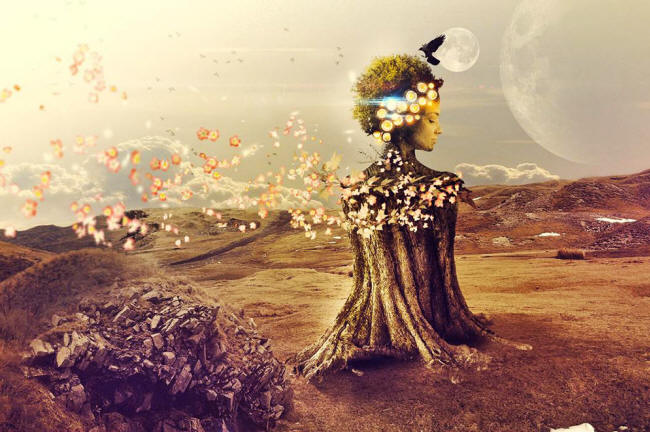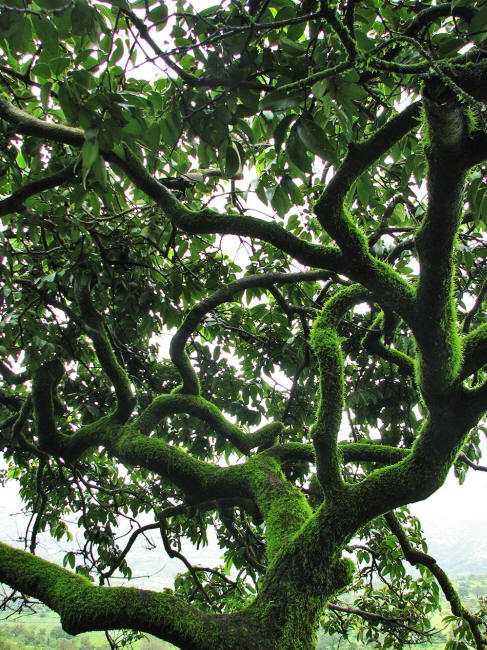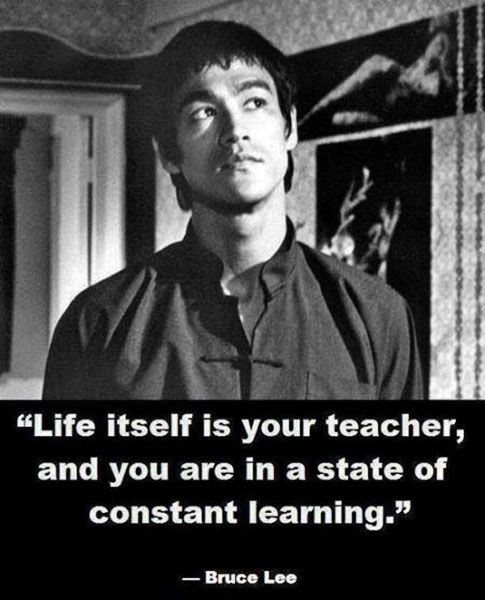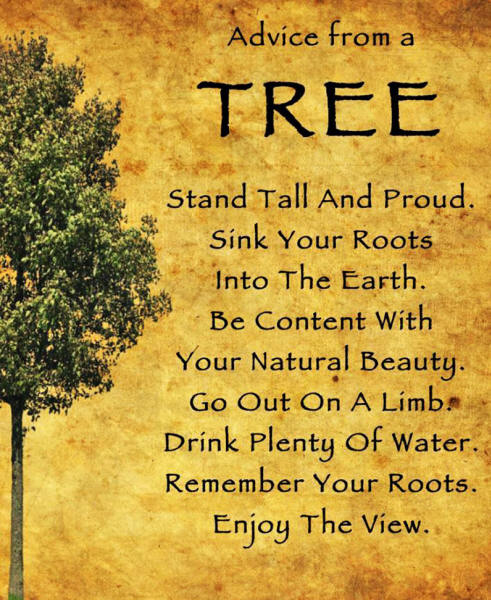|

by Michael Ribas
May 18, 2014
from
FractalEnlightenment Website

by Daniel Designer
Source
Nature is a marvelous teacher.
If you look closely at any part of
nature, you will realize there is something to learn from
everything, even a tree. The life of a tree has many parallels to
the life of a human.
While most of these similarities are physical, there are existential
lessons to be learned from the physical as it is how we process and
experience life.
Let’s take a look at what these words convey.
From the very beginning of a tree’s life, we can see parallels to
our own lives.
While the processes are different, a seed is planted
in the earth much like sperm and ovum are planted in the uterus.

The seed begins to grow in two directions remarkably similar
to the zygote which divides and grows through mitosis.
The earth is
the womb to the seed as the mother is the womb to zygote.
Thus, the beginning of the lesson provided by the tree is that many
things in life grow in two directions.
We as humans are often taught
that
light is good and darkness is evil.
The tree shows us that this
is not the case as by growing down into the earth it nourishes,
anchors and stabilizes itself.
Simultaneously, the tree grows up into the atmosphere.
Here, we see
how the tree seeks sunlight to harness, convert and store its
energy.
The message is of maintaining a balance of up and down, dark
and light, and that our primary sources of physical existence are
the sun and earth.
During birth and youth, the tree is vulnerable much like the humans.
It requires proper environment to grow and flourish like nutrient
rich soil, water and sunlight.
The tree is shaped by its environment
as the wind, soil, rain, rocks, animals and human constructs promote
or interfere with its growth.
Young humans too are profoundly influenced by their environment,
both physically and emotionally.
Humans require atmosphere, water,
food, clothing and shelter as well as care givers to love and teach
them.

Again a parallel,
the earth and sun are to the tree what the mother
and father are to the child.
As the tree transitions from sprout to
sapling, it must be strong yet flexible as the elements in nature
are at times harsh.
The perils of the adolescent tree are many and include fire,
drought, flood, extreme temperature, wind, moss, other plants,
insects, animals and humans.
These same elements are concerns to young humans as well.
Apart from
physical, humans have emotional and psychological needs that are
ideally provided in a beneficial manner yet many times they are
detrimental; much akin to treachery within nature.
This parallel is
that the beneficial supports and nourishes while the difficult
strengthens and prepares us for future challenges.
Throughout its existence the tree grows, blooms, reproduces, sheds,
sometimes goes dormant and eventually dies just as all physical
entities must.
Humans also have seasons in life, and while we do not
shed leaves we do have friends and family that perish (parts of our
family tree).
The physical losses of the tree are much like the physical losses of
humans, yet we have an emotional/psychological component.
A lesson
from the tree shows that while it may lose all of its leaves and
even some branches in the fall - there will soon be new leaves to
grow and new branches that will help nourish its growth.
Each time we lose a loved one we are given an opportunity to give
that love to someone else, someone that needs it and someone that
may very well respond in kind.

In life trees behave in response to the seasons.
They have means to
procreate.
They house many other organisms from the microscopic, to
insects, reptiles, to birds, primates and in death they even house
humans.
They usually live for many years and provide stability and
nourishment to topsoil.
They provide shade, weather protection,
oxygen, sometimes food in life and then in death they provide timber
for building, heating and cooking.
As we live our lives, we humans have comparable experiences and
provide many of the same services to each other as well as to other
species whether intentionally or inadvertently.
Another phenomenon that the tree demonstrates well is how life
continues uninterrupted even after what appears to be an end.
Consider the tree that provides firewood to cook a meal that a human
eats.
In this instance, the life of the tree (its stored energy) is
released to feed the fire which in turn cooks the food to feed a
human who in turn has a child that plants a tree.
Thus the tree
shows us how there is no beginning, and no end to life.
Life is a
cycle that does not judge or condemn or expect anything. It just is...
There are many lessons here as the tree does not begrudge or charge
the insects and animals that take residence, sustenance or proximity
to it.
The tree gives much while taking only what it requires from
the earth and the sun.
It grows up into the light, and it grows down into darkness.
All it
has to give, it offers unconditionally without expectations and
regrets.
In the bleak of winter, it stands patiently awaiting spring without
self-pity, complaint or worry.
The tree in its simplicity
understands that it is a beautiful part of something much grander
than itself and if you care to observe its example you can learn
from what it leaves...
| 




